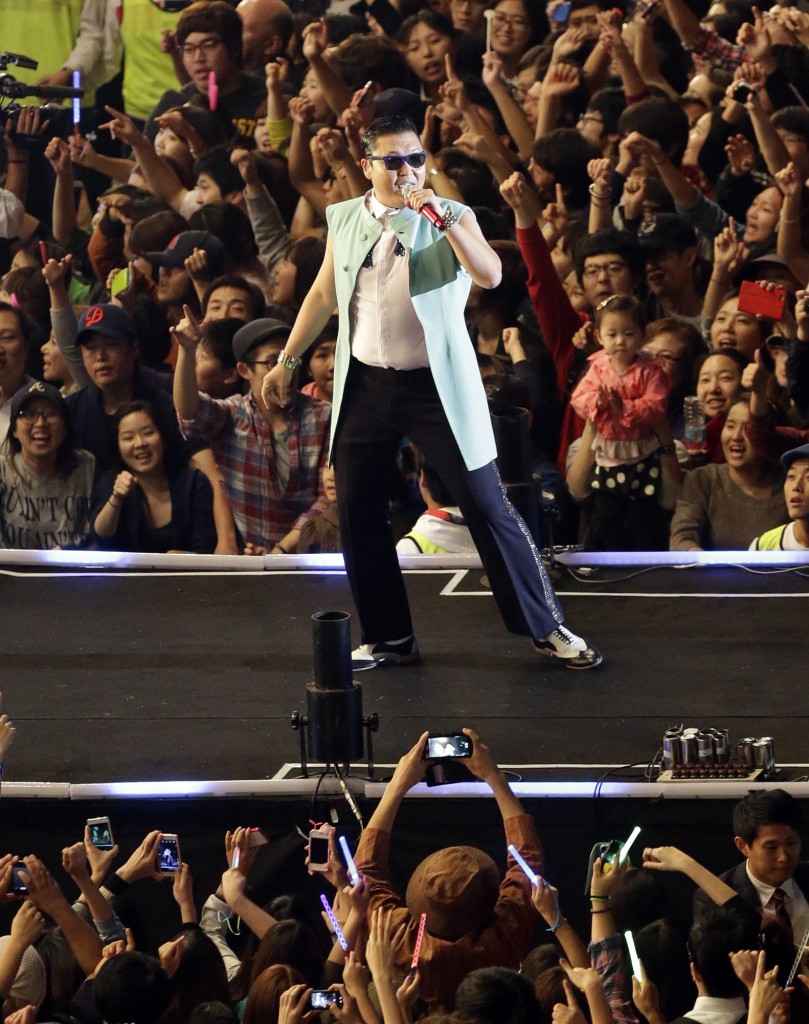
On Sept. 26, South Korean artist PSY made history by reaching the No. 2 spot on the Billboard Top 100 list. He is the first South Korean artist to reach a spot in the top 10 and only the second South Korean artist to ever appear on the list. His hit single, “Gangnam Style,” was declared the “most ‘liked’ video in YouTube history” by Guinness World Records on Sept. 20, 2012. “Gangnam Style” may be the first true crossover K-pop song, but it is far from the first instance of South Korean entertainment crossing the threshold into Western culture.
The so-called “Korean Wave,” which refers to both the enhanced visibility and popularity of South Korean culture, can be traced back to the ‘90s. In 1995, the first K-pop record label, S.M. Entertainment, was founded. Slowly, the genre began to define itself as it grew in popularity. The fledgling K-pop scene looked to Western and, more specifically, American popular music for inspiration, but added new cultural elements. Now, in 2012, some aspects of American culture can be identified within K-pop, but the genre has begun to take on a life on its own. Korean popular music has broken down American popular music into its parts and Western artists can rethink their use of tropes and clichés when it’s presented to them from an outside perspective.
Nicki Minaj, for example, can serve as the figurehead in the recent prominence of Korean culture in America (referred to in Korea as “hallyu”). Her overtly exotic outfit in the video for “Your Love” and the flashy hairstyles and outfits in the video for “Super Bass” both point to K-pop, as does the complex choreography in the latter. Her video for “Check It Out” is set on a Korean TV soundstage and the lyrics are crudely translated on the side. Lady Gaga is another artist who draws heavily from Korean culture in her exuberant costumes and on-stage antics. Alternative music is also in the clutches of K-pop, with artists such as Grimes using K-pop-influenced costumes and makeup in her video for “Vanessa.” Besides the obvious attempt to capitalize on the “exotic” and “mysterious” elements of Asian culture, they all point towards another issue that has arisen alongside K-pop.
Korean groups such as Girls’ Generation and 2NE1 have been attempting to break into the American market since 2008, through endeavors such as English language singles and tours. But neither group utilized social media in the way that PSY did in order to make “Gangnam Style” the hit that it is today. PSY could not copyright his music and gave full control to his record label for distribution of his songs. Korean artists should not have to feel obligated to try and appeal to a Western market at the expense of their own creative control. The relationship between Korean and American music is almost paradoxical. Korean popular music first started by borrowing heavily from American music, the same market that it is now trying to sell its music to. The American market reacts by borrowing from a culture that borrowed from them. This dilution of ideas in order to cater to certain markets isn’t strengthening either country’s music, instead devaluing both.
K-pop and American pop music are becoming more and more intertwined and if “Gangnam Style” is any indication, then this is only the beginning of a much bigger trend.


